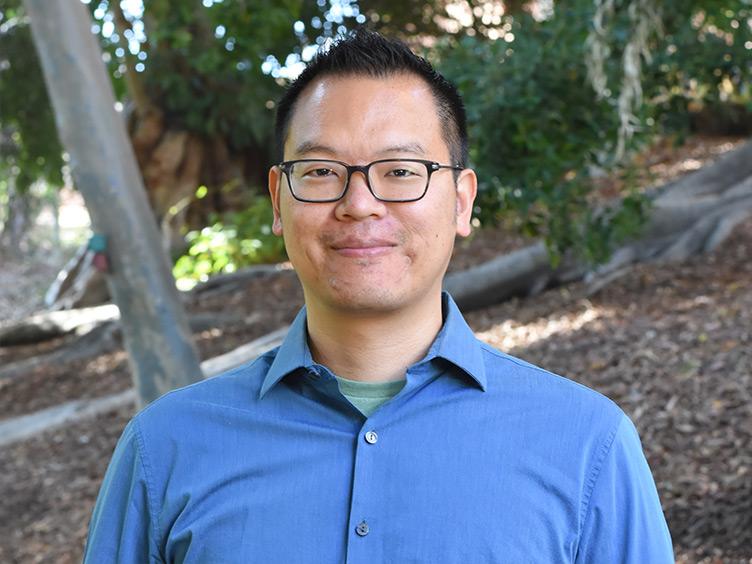Profile

Jimmy K. Hu, Ph.D.
- (310) 825-7242
UCLA School of Dentistry
10833 Le Conte Ave.
Box 951668
Los Angeles, CA 90095-1668
Dr. Hu is an Assistant Professor in the Division of Oral and Systemic Health Sciences at the UCLA School of Dentistry. Dr. Hu has a long-standing interest in developmental and stem cell biology and has focused his research on understanding tissue morphogenesis and stem cell-based renewal during his graduate study at Harvard University and postdoctoral training at UCSF. He joined the UCLA School of Dentistry in 2019 and has continued to investigate how organs are shaped and renewed, using teeth and craniofacial structures as model systems.
- Du W*, Hu JK*, Du W, Klein OD. (2017) Lineage tracing in developing teeth reveals two mechanisms for building signaling centers. J. Biol. Chem. 292(36):15062-15069. PMCID: PMC5592681
- Hu J.K., Du W., Shelton S., Oldham M., DiPersio C.M., Klein O.D. (2017) An FAK-YAP-mTOR signaling axis regulates stem cell-based tissue renewal in mice. Cell Stem Cell 21(1):91-106 PMCID: PMC5501749
- Li C.Y.*, Hu J.K*., Lu H., Lan J., Du W., Galicia N., and Klein O.D. (2016) αE-catenin inhibits YAP/TAZ activity to regulate signaling center formation during tooth development. Nature Communications. 7:12133. PMCID: PMC4947177
- Biehs B.*, Hu J.K.*, Strauli N.B., Sangiorgi E., Jung H., Heber R.P., Ho S., Goodwin A.F., Dasen J.S., Capecchi M.R., Klein O.D. (2013). BMI1 represses Ink4a/Arf and Hox genes to regulate stem cells in the rodent incisor. Nat. Cell Biol. 15(7):846-52. PMCID: PMC3735916
- Hu J.K., McGlinn E., Harfe B.D., Kardon G., Tabin C.J.. (2012). Autonomous and nonautonomous roles of Hedgehog signaling in regulating limb muscle formation. Genes Dev. 26(18):2088-102. PMCID: PMC3444734
-
B.Sc.(Hons), University of Auckland, New Zealand, 2003
-
Ph.D., Harvard University, 2012
As an embryo develops and primordial organs begin to take shape, a confluence of biochemical and mechanical signals instructs constituent cells to organize into specific patterns and forms. The Hu lab seeks to understand how these signaling cues modulate cell behaviors and gene expression in order to generate correct tissue morphologies and cellular identities during development. The lab uses several craniofacial structures as model systems, including the tooth and the ear, and interrogates them via mouse genetics, live imaging, and biomechanical techniques in order to determine how mechanical forces and biochemical signals are generated and used to control different cellular processes and drive morphogenesis. Dr. Hu’s team has a particular interest in how mechanical forces are integrated with molecular signaling pathways such as Hippo and Integrin, in order to modulate key developmental patterns, such as how epithelial tissues buckle, turn, and invaginate.
In addition to the primary patterning of an organ during development, once an organ is formed it must also be maintained or repaired in order to function normally throughout the lifespan of the animal. Many of these processes are dependent on proper regulation of resident somatic stem cells, which, like progenitor cells in embryos, are under the control of biochemical and mechanical cues. The Hu lab studies how tissue architecture contributes to stem cell regulations, focusing on understanding the roles of cell density, adhesion, and arrangement in governing cell proliferation and differentiation.
Ultimately, the Hu lab aims to extract principal mechanisms of tissue morphogenesis and stem cell regulation from these experiments in order to design and develop strategies for regenerative medicine.
- Member of Society for Developmental Biology (SDB) (2009-present)
- Member of International Society for Stem Cell Research (ISSCR) (2013-present)
- Member of Society of Craniofacial Genetics and Developmental Biology (SCGDB) (2013-present)
- K99/R00 award from NIH NIDCR (2016)
- F32 award from NIH NIDCR (2013)
- The University of Auckland First Class Honours (2003)
